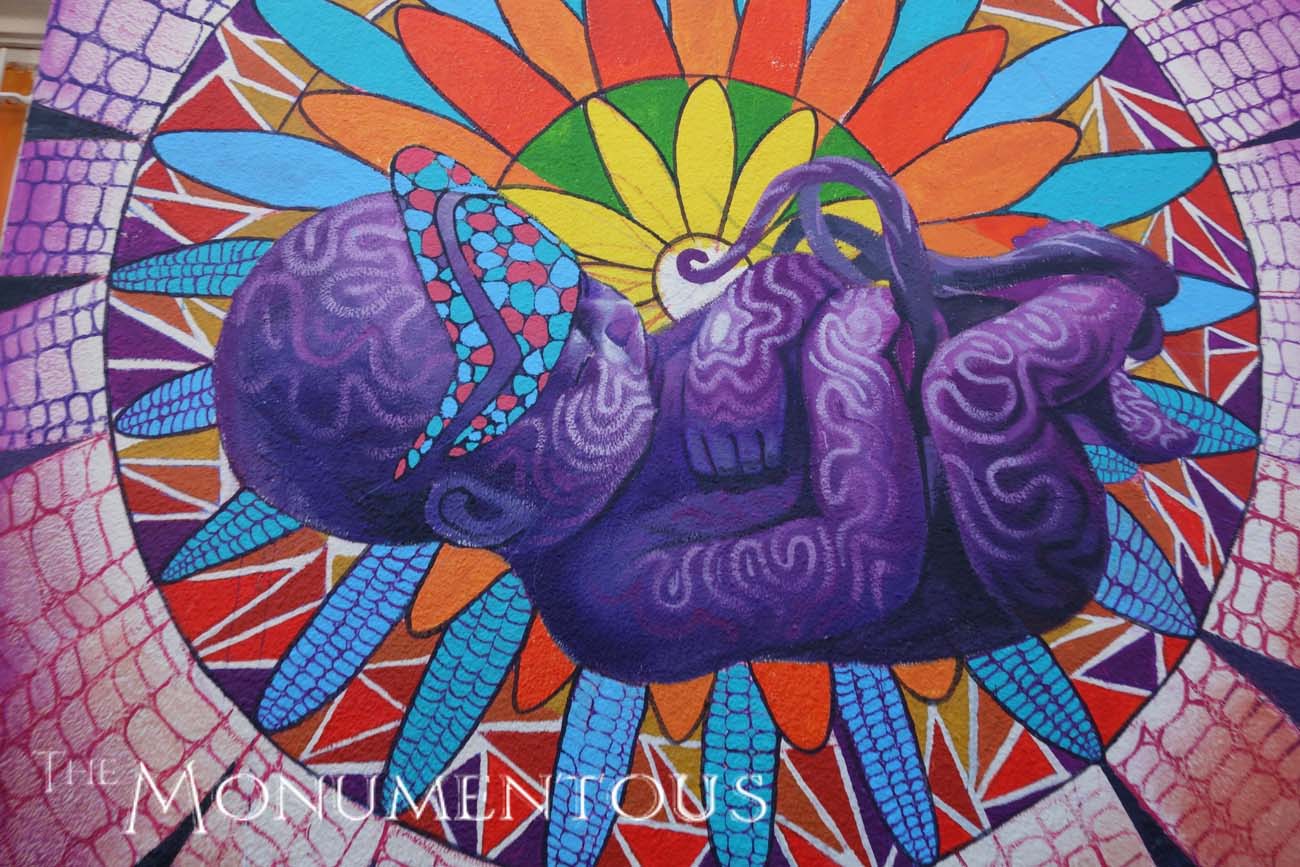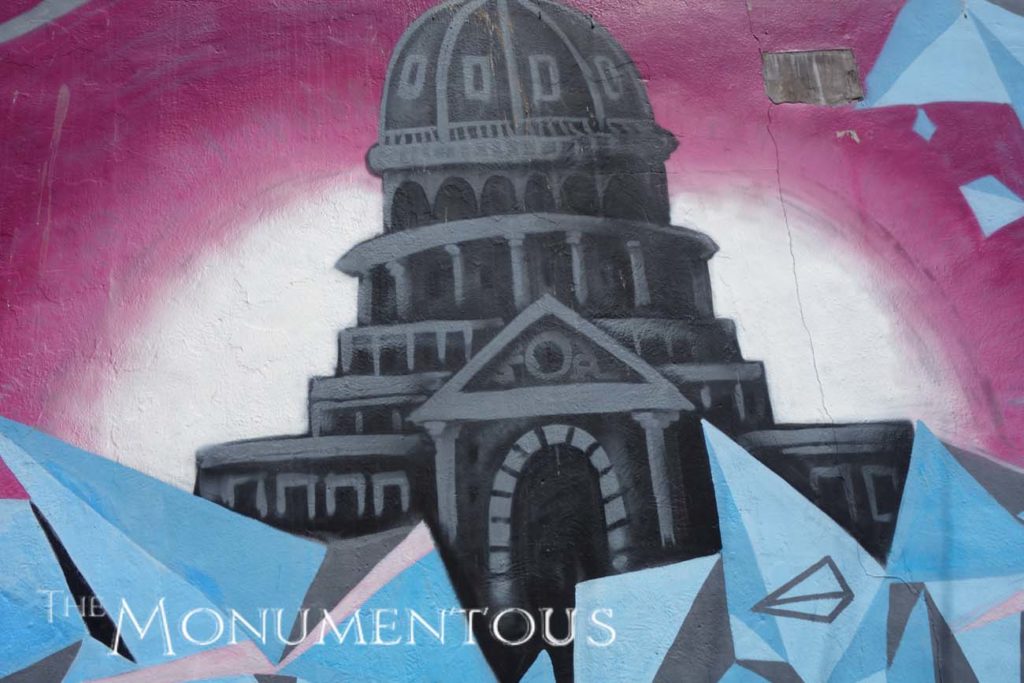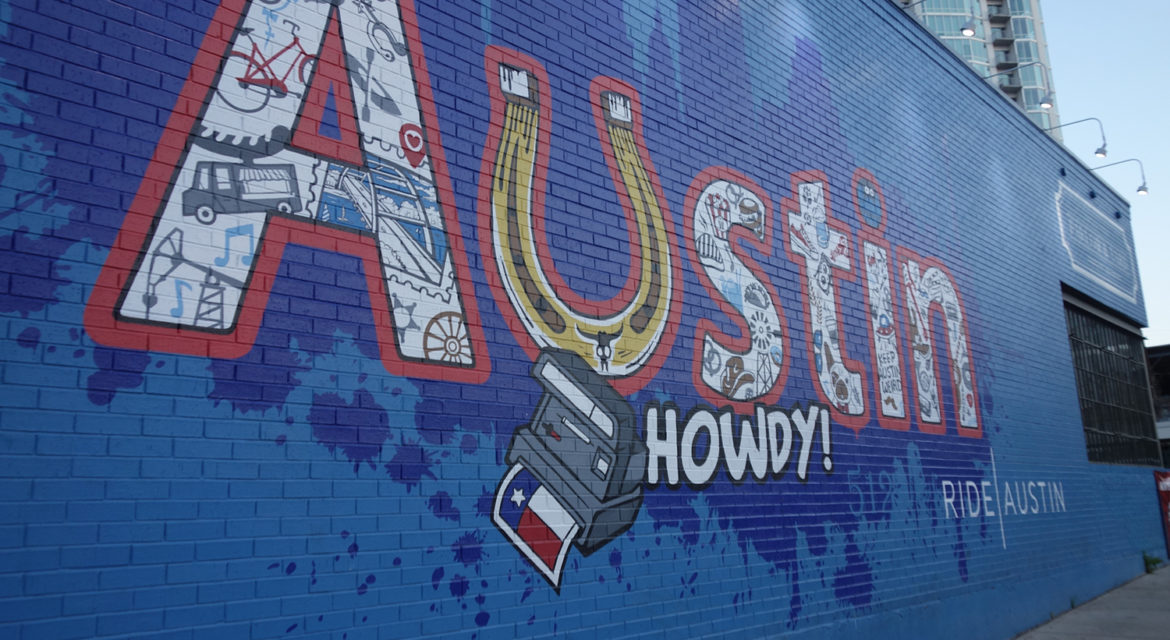 Monuments and landmarks are typically appreciated as single structures or experiences. The Washington Monument in Baltimore is a single structure that gives visitors a one-of-a-kind view of Baltimore, while the Neon Museum allows visitors to experience Las Vegas history in a totally unique way. These experiences are powerful but physically limited, and those limitations are especially evident when compared to monuments that don’t possess these kinds of restrictions.
Monuments and landmarks are typically appreciated as single structures or experiences. The Washington Monument in Baltimore is a single structure that gives visitors a one-of-a-kind view of Baltimore, while the Neon Museum allows visitors to experience Las Vegas history in a totally unique way. These experiences are powerful but physically limited, and those limitations are especially evident when compared to monuments that don’t possess these kinds of restrictions.
The murals and street art that are spread across Austin, Texas can in some ways be seen as the personification of the “Keep Austin Weird” slogan, but these expressions of creativity are fueled by the culture of the city itself. It’s something that has compelled the participation of people from across the city and can be seen in a variety of ways. The effort has created a monument to something that is about much more than a single mural, and because of that can be considered to be a monument to a spirit and culture that continues to grow and change in an incredible manner.

“Greetings from Austin”
Known by most as the “Hi, How Are You?” frog, this image that some believe is glorified graffiti, is actually an icon with origins in the Austin music scene. Daniel Johnston put this frog on the cover of his 1983 album “Hi, How Are You: The Unfinished Album.” Ten years later it was painted on the wall of an indie record store at their invitation, although the store eventually went out of business. At one point in danger of being torn down, the mural was given a “cultural landmark” plaque in 2014.
The “Greetings from Austin” mural was initially painted in 1998 by artist Todd Sanders, owner of Roadhouse Relics. Designed to draw attention to a neighborhood that wasn’t doing especially well, it has succeeded in pulling people from across the city and world down to 1720 S. 1st St. A restoration in 2013 ensured that those visitors would now be able to get their pictures in front of a mural that is as vibrant as it was the day it was painted.
 The history behind “You’re My Butter Half” and “i love you so much” have also helped establish the spirit of the murals throughout the city, but The HOPE Outdoor Gallery is probably the best example of the personification of the spirit behind all of this work. It is the only paint park of its kind in the USA and was developed to provide muralists, street artists, arts education classes and community groups the opportunity to display large-scale art pieces driven by inspirational, positive & educational messaging.
The history behind “You’re My Butter Half” and “i love you so much” have also helped establish the spirit of the murals throughout the city, but The HOPE Outdoor Gallery is probably the best example of the personification of the spirit behind all of this work. It is the only paint park of its kind in the USA and was developed to provide muralists, street artists, arts education classes and community groups the opportunity to display large-scale art pieces driven by inspirational, positive & educational messaging.
This messaging is present to various degrees throughout Austin, where you can find a mural or other piece of street art just about everywhere you look, making the experience of being in the city as distinct as it is notable.

Experiencing the Spirit of Austin
Entire books have been written to discuss the social, cultural and economic changes that have been taking place in Austin over the past few decades, and it’s impossible to walk around the city without seeing how these changes have impacted the city in a very real way. The spirit behind these changes is personified in murals that can depict anything from the state capital building to birth.
In some places, whole buildings are covered in art while others feature entire walls that have been taken over by murals. Anyone on the lookout for the next mural will be able to find one in no time, because it’s not just artists and advocates that are supporting this spirit. Numerous businesses have partaken in it as well.
The effort has intertwined with the history of Texas in a very real way, as anyone on the lookout for murals will find such things interspersed with historical markers throughout the city. Whether it’s a marker that calls attention to a battle that took place at a particular spot or lays out the history associated with a specific building, the street art of Austin draws audiences into the history of the state in an especially unique manner.
 That’s something that also happens at the state capital, where the park-like grounds surrounding the capitol are scattered with statues and monuments. The first monument was installed long before the first mural, but The Texas Capitol Vietnam Veterans Monument was dedicated in 2014, and it’s proven to be very much a part of the spirit and culture that permeates the city.
That’s something that also happens at the state capital, where the park-like grounds surrounding the capitol are scattered with statues and monuments. The first monument was installed long before the first mural, but The Texas Capitol Vietnam Veterans Monument was dedicated in 2014, and it’s proven to be very much a part of the spirit and culture that permeates the city.
It’s simple enough to find out where some of the most famous murals are located, but many of them are spread out, and what viewers take in as they bounce from one to the next is an essential part of the experience. The reward of finding that mural is about much less than the journey itself to find it.
This sense of discovery is something that is a direct result of the culture the murals and street art have enabled, although in some ways, it’s not the most important aspect of these changes.

The Indefinable Benefits of a Creative Culture
The intangible benefits of the street art and murals in Austin are too numerous to count, and their direct influence can of course be seen in literal ways. The city would be less welcoming and colorful without them, but it’s their intangible benefits that are especially powerful.
Among the many benefits that the HOPE Gallery has provided include jobs for local artists, summer school programs, local wedding location pictures and yoga classes, among many others. These are just a few of the tangible benefits the park has created for the community, while the intangible benefits are related to the new developments that have sprung up at and around the area.
 The transformative powers this spirit has been able to enact for different neighborhoods, and for some businesses, has also created numerous financial opportunities. Ancillary financial benefits have been enabled by this spirit, similar to how nearly $1.5 million dollars in change is tossed into the Trevi Fountain over the course of a year. Organizations pay to have their logos and signage displayed during big events in the city, while entire businesses have been created to serve the residents and visitors. All of it has contributed to the changes that have helped to transform Austin as a whole.
The transformative powers this spirit has been able to enact for different neighborhoods, and for some businesses, has also created numerous financial opportunities. Ancillary financial benefits have been enabled by this spirit, similar to how nearly $1.5 million dollars in change is tossed into the Trevi Fountain over the course of a year. Organizations pay to have their logos and signage displayed during big events in the city, while entire businesses have been created to serve the residents and visitors. All of it has contributed to the changes that have helped to transform Austin as a whole.
These literal and figurative changes to the city are secondary to a spirit that has come to identify Austin itself and establish a powerful legacy for the city.

The Evolution of a Legacy
 How many murals does Austin contain? Many attempts have been made to count and document all of this work, but it’s something that continues to grow and evolve as artists and owners embrace the spirit that has enabled the city to express itself in a profound manner. Coming up with a definitive number is pointless because it’s one that is set to keep growing and changing.
How many murals does Austin contain? Many attempts have been made to count and document all of this work, but it’s something that continues to grow and evolve as artists and owners embrace the spirit that has enabled the city to express itself in a profound manner. Coming up with a definitive number is pointless because it’s one that is set to keep growing and changing.
The street art in Austin redefines what can and should be considered a monument since the spirit it has come to represent is about much more than a single structure or experience. It’s a showcase of how a spirit of creativity can permeate the culture of a city to enable a legacy that will continue to evolve thanks to the countless people that have and will be involved in it.
